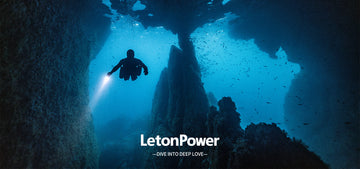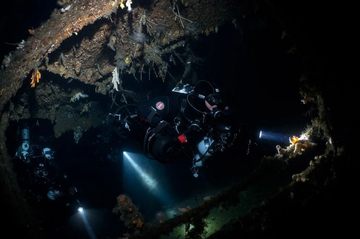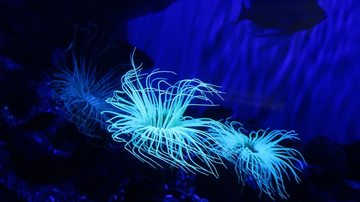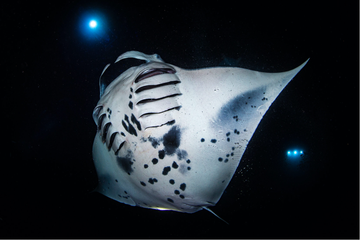Types of Dive Lights
-
Handheld Dive Lights – Compact and portable, ideal for general diving and backup lighting.
-
Canister Dive Lights – Feature a separate battery pack for extended burn time, often used by technical divers.
-
Underwater Video Lights – Designed for photography and videography, with adjustable color temperature and brightness.
-
Diving Flashlights (Pistol-Grip Lights) – Ergonomic grip for easy handling, commonly used in wreck and cave diving.
-
Head-Mounted Dive Lights – Hands-free lighting, perfect for night diving or tasks requiring both hands.
-
Strobe & Flashing Dive Lights – Used for signaling, safety, and attracting marine life.
Key Buying Factors
1. Brightness (Lumens)
-
Recreational Diving: 500–1,500 lumens.
-
Technical/Cave Diving: 2,000+ lumens.
-
Underwater Photography/Videography: Requires consideration of both brightness and color temperature & CRI (Color Rendering Index).

Beam Angle
-
Narrow Beam (5-15°): Strong penetration, ideal for long-distance illumination.
-
Wide Beam (60-120°): Broad coverage, perfect for close-range observation and underwater video lights.
Battery Type & Runtime
-
Rechargeable Lithium Batteries: Eco-friendly and cost-effective, but ensure waterproof charging ports.
-
Disposable Batteries: Convenient for emergencies, but higher long-term costs.
-
Runtime: Should last at least a full dive (60-90 minutes).
Maximum Depth Rating
-
Recreational Diving: 30-60 meters is sufficient.
-
Technical Diving: Requires 100+ meters rating for reliability.
Size & Weight
-
Balance Portability & Performance: A compact dive light is easier to carry, while larger models may offer higher brightness and battery life.
-
Mounting & Handling: Consider whether you need handheld, canister, or head-mounted options for ease of use underwater.
Operation Method
-
Twist Head: Excellent waterproof performance, simple and reliable.
-
Button Switch: Easy to operate, even with gloves.
-
Magnetic Switch: Advanced technology, reduces moving parts for better durability.
Special Features to Consider
-
Adjustable Brightness: Flexibility for different diving scenarios.
-
SOS Mode: Emergency signaling for safety.
-
Battery Indicator: Prevents sudden power loss during dives.
-
Overheat Protection: Avoids damage from prolonged use.
-
Interchangeable Lenses: Adapt beam angles (wide/narrow) for varied needs.
Product Series & Price Reference
Budget Dive Lights (Total Price < $100)
-
Explorer 14S – Best Value
-
Brightness: 2,000 lumens (5500K white light)
-
Beam Penetration: Effective up to 40m depth
-
Features:
-
Stepless dimming (smooth brightness adjustment)
-
USB Type-C charging
-
Runtime: 3 hours (max brightness)
-
Battery indicator with low-power warning
-
6 Lighting Modes: High / Medium / Low / SOS / Strobe / Emergency Flash
-
Ideal for diving, outdoor adventures, and emergencies
-
-
-
Explorer 26S – High-Performance
-
Brightness: 5,000 lumens
-
Runtime: 6 hours (max brightness)
-
Waterproof Rating: 100m
-
Features:
-
USB Type-C charging
-
Battery indicator with charging alert
-
5 Lighting Modes: High Strobe / Medium Strobe / Low Strobe / Fast Flash / Slow Flash
-
Perfect for deep diving, night diving, and technical diving
-
-

Underwater Video Lights (Photography/Videography Focus)
1. Sealion L12 – High Cost Performance
-
Brightness: 8,000 lumens
-
Light Modes:
-
6500K (Cool White)
-
Blue Light (For fluorescence/night diving)
-
Red Light (Preserves night vision, reduces plankton scatter)
-
-
Beam Angle: 120° (Wide coverage for close-range filming)
-
Best For: Budget-conscious divers needing versatile lighting for photos & videos.
2. Shark CX – Professional-Grade Filming
-
Brightness: 8,000 lumens
-
Precision Color Modes:
-
5500K (Natural White – Balanced for most underwater scenes)
-
3000K (Warm White – Enhances warm tones in murky water)
-
Blue & Red Light (Specialized applications)
-
-
CRI 98 (Exceptional color accuracy for true-to-life footage)
-
Beam Angle: 120° (Ideal for wide shots and macro photography)
-
Best For: Professional underwater photographers/videographers requiring studio-quality lighting.

Usage & Maintenance Tips
Post-Dive Care
-
Rinse Thoroughly: Flush with fresh water (especially switches/seals) to prevent salt corrosion.
-
O-Ring Maintenance: Inspect regularly and apply silicone grease to ensure waterproof integrity.
Battery & Storage
-
Charge Level for Storage: Keep batteries at 50% if unused for long periods.
-
Storage Conditions: Store in a cool, dry place, away from direct sunlight.
-
Transport Safety: Remove batteries to prevent accidental activation.
Safety Reminders
-
Always Carry a Backup Light – Essential for emergencies.
-
Avoid Shining Lights Directly – Never point dive lights at other divers’ eyes.
-
Depth & Color Temperature – Use red light for deeper dives (better penetration, less marine life disturbance).
-
Team Signal System – Agree on light signals (e.g., flashes for communication) before group dives.
Final Advice
Choosing the right dive light depends on balancing your diving type, frequency, and budget. Investing in a high-quality underwater light not only enhances your experience but also ensures safety. May this guide help you find the perfect beam to illuminate the underwater world!






